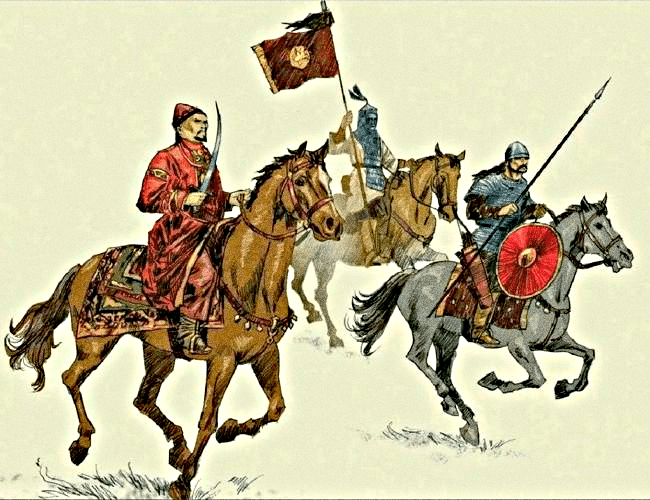Kipchaks (Kypchaks) is an association of Turkic-speaking tribes that played a significant role in the history of several regions of Eurasia in the IX-XIV centuries.
Self-name — Kipchaks (kypchak[lar]), later Tatars (tatar[lar]); in European and Byzantine sources they are called Kumans (Latin cumani, comani, Greek kο[υ]μάνοι), later Tatars (Greek τάταροι) — a nomadic Turkic people who had their own country — Desht-i Kipchak. In Russian sources they are called Sarachins, in Hungarian sources they are called Kuns.
At the beginning of the XI century, the Kipchaks from the Volga region advanced to the Black Sea steppes, displacing the Pechenegs and Torks. Then the Kipchaks crossed the Dnieper and reached the lower reaches of the Danube, thus settling the entire Great Steppe from the Danube to the Irtysh, which from that time onward was called Desht-i-Kipchak (Kipchak steppe) in Eastern sources.
During the formation of the Golden Horde (mid-13th century), the Kipchaks assimilated the Mongol conquerors and passed their language to them. Later, the Kipchak language formed the basis of the Kazakh, Bashkir, Karaite, Karakalpak, Karachai-Balkar, Crimean-Tatar, Krymchak, Kumyk, Nogai, Tatar, and Siberian-Tatar languages.
The Kipchaks are the Polovtsians
From history we all know that in ancient times the Russians often fought with the Kipchaks. But who are these Polovtsians?
Where did the ethnonym «Polovtsi» come from, it is not known exactly. At one time there was a version that it is associated with the word «field», because these peoples lived in the field, the steppe. Modern historians believe that the word «Cumans» came from «polovy» — «yellow-white, yellowish, straw». Most likely, the hair of the representatives of this people was light-yellow, straw-colored. Although it is strange for Turkic tribes. The Kipchaks themselves called themselves Kipchaks, Kimaks, Kumans.
Separately, it is worth highlighting the fact that the first official mention of the term «Kypchak» was found by experts near Selenga in Buryatia. The inscription on a stone was dated approximately to the sixth century AD. And this is despite the fact that in general the Kipchaks in the Kypchak (Kimak) Kaganate were called Shary/Sary (lit. yellow-haired).
It is interesting that the word «Kypchak» (or, as the bearers themselves pronounced it, «Kypchak») means «ill-fated» in Turkic dialects.
Most likely, the ancestors of the Kypchaks were the tribes of Shar (Sar), who roamed in the IV-VII centuries in the steppes between the Mongol Altai and the eastern Tien Shan. There is evidence that in 630 they formed a state called Kipchak, later destroyed by the Uighurs and the Chinese.
At the beginning of the 11th century, Cumans tribes came from the Volga region to the Black Sea steppes, then crossed the Dnieper and reached the lower reaches of the Danube. Thus they managed to settle the whole territory from the Danube to the Irtysh, which was called the Great Steppe. Eastern sources even call it Desht-i-Kipchak (Kipchak steppe).
Initially, representatives of the tribes willingly came into contact with Russia, gave gifts and married Russian people. The most famous native of the Kipchak family in those distant times was Andrei Bogolyubsky, who was the ruler of the Vladimir-Suzdal principality. By the way, under him the principality became the most prosperous.
Since the second half of the XI century, the Polovtsians were now and then raiding Russia, devastating the lands, taking cattle and property and taking the local inhabitants captive. The border principalities — Pereyaslavl, Seversk, Kiev and Ryazan — suffered most of all from Cumans’ attacks.
At the beginning of the XII century, the armies of Princes Svyatopolk Izyaslavich and Vladimir Monomakh managed to drive the Polovtsians to the Caucasus, the Volga and the Don. Subsequently, they made up the majority of the population of the Golden Horde.
It was from them, according to historians, that Tatars, Kirghiz, Gagauz, Uzbeks, Kazakhs, Karakalpaks, Nogai, Kumyks, Bashkirs, Karachais and Balkars descended.
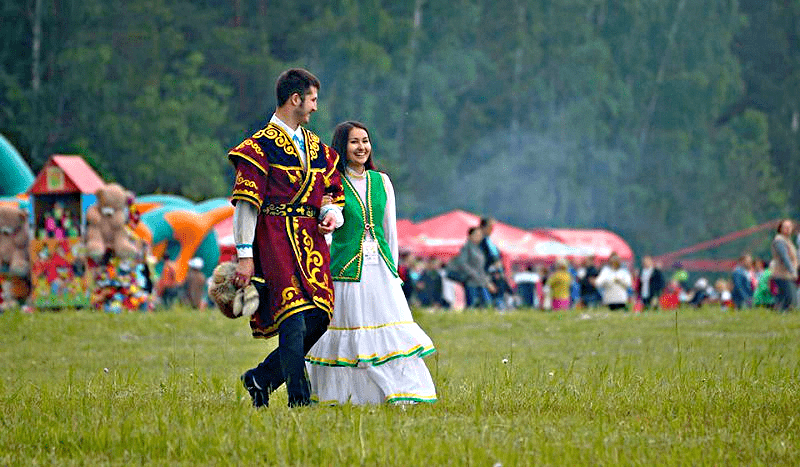
Are the Kipchaks European or Asian?
If we believe the anthropological data of scientists, the Kipchaks were typical Europeans. All descriptions say that the Kipchaks had blond or reddish hair, gray or blue eyes… Another thing is that in the process of assimilation they mixed with Mongols, and their descendants already acquired Mongoloid features.
Today among Nogai, Kazakhs, Bashkirs, Tatars, Kirghiz, Altaians there are descendants of tribes with the generic names «Kipchak», «Kypshak», «Kypsak» with similar genetic haplogroups.
During the mass waves of migration, a part of the Kipchaks began to move far away from their original habitats, heading away from the banks of the Dnieper. This separated group later received a separate name — the Kumans.
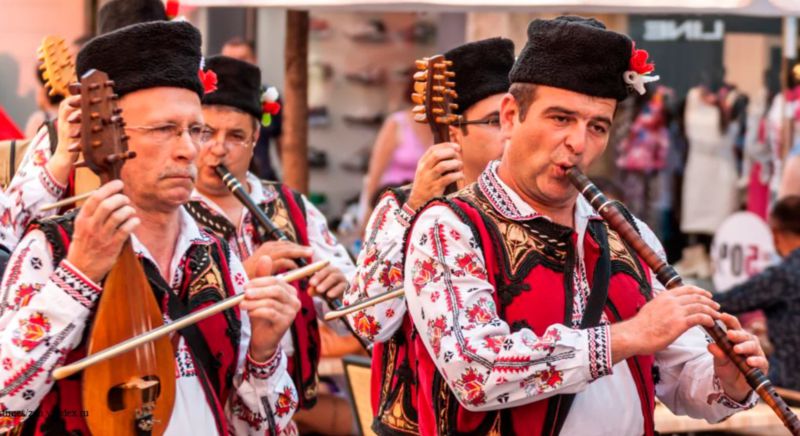
Kubans in Bulgaria
By the way, even today there are still small groups, but still actively existing, under the names of Kubans and Komans. They can be found when studying a control cross-section of nationalities living in modern Bulgaria.
And among the Hungarians one can occasionally come across those who are familiar with such a term as «Kuns». This was the name given to people who got into the wave of migration of the Kipchaks and became part of them.
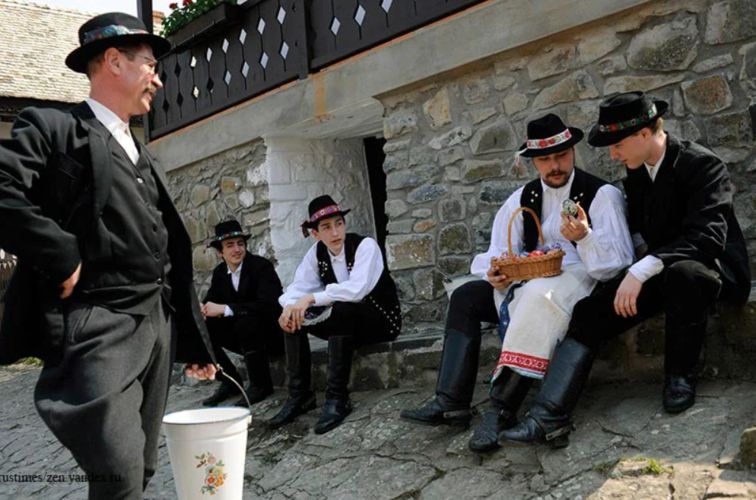
Hungarian Polovtsians — kuns
A number of researchers believe that distant descendants of Kipchaks are also found among Ukrainians, Poles, Czechs, Bulgarians and even Germans.
Thus, the blood of Kipchaks can flow in many peoples not only of Asia, but also of Europe, and even Slavic, not excluding, of course, and Russian…
Are Kazakhs and Kyrgyz Mongols or Kipchaks?
As soon as the Mongol expansion began in the 13th century, the Kipchaks lost their independence. Over time, their typical appearance (light-colored eyes, red hair) began to be erased, being replaced by a number of features inherent to the Mongoloid race. Also true would be the statement: Mongols dissolved in Kipchaks, not vice versa, because in most peoples nationality is determined by the father.
Today it is impossible to say with certainty that, for example, Kazakhs and Kirghiz are Kipchaks. The former Kipchaks have long ago dissolved into a multitude of peoples, but anthropologically, of course, they were Europeans.
Then a natural question arises: are the modern Kazakhs and Kirghyzes Kipchaks or Mongols? After all, anthropologically they are mostly East Asians, not Europeans. Genetics can answer this question.
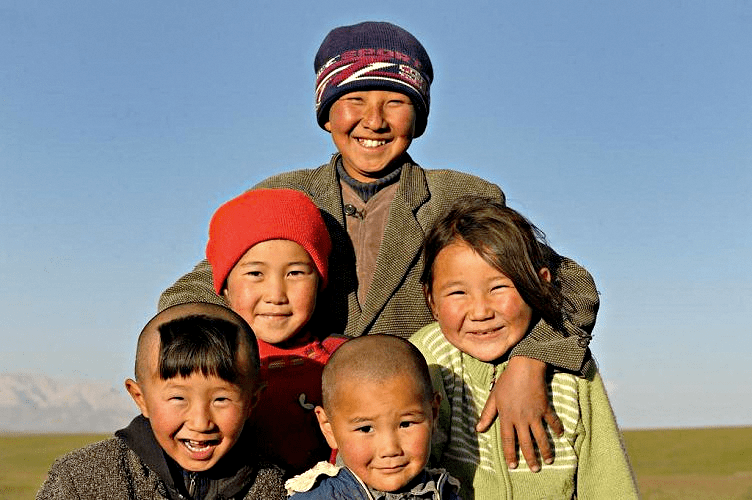
Russian and foreign scientists have identified the main indigenous (basic) Mongolian haplogroups on the Y-chromosome, passed from father to son, it is N1a1a, C2a3-F4002. So, those peoples at which the specified haplogroups are massively present, it is possible conditionally to refer to Mongolian peoples, instead of Kypchak, because genes have been transferred from the father to the son.
The Kypchak haplogroup is R1a. The Kyrgyz have a very high proportion of carriers of the Y-chromosomal haplogroup R1a — 63.4%.
R1a is most widespread in Central and South Asia, Central and Eastern Europe. High frequency of R1a besides the Kyrgyz is also found in the Khoton ethnic group in Mongolia, Brahmans, Yagnobians in Tajikistan, Poles, and Latvians.
Nevertheless, it is unlikely to be possible to answer unequivocally the question about the ethnic cross-section of the Kipchaks, because in fact, due to fluid migration and constant military conflicts, there was a constant mixing of blood.
Not to mention the fact that tribal unions did not exist for long, regularly breaking up and concluding with other, more suitable ethnic groups.
